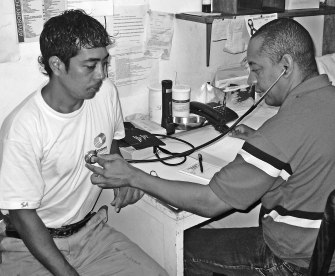Most patients don't need extra tests for diagnosis |26 August 2011

Doctors said that when tests such as CT scans and ultrasounds were given to patients right
Dr. Matthew Sibbald, a cardiologist at the University of Toronto who wasn't involved in the new study said:
"The doctoring process is still a personal communication between the patient and the clinician. As much as we want to ... rely on the technology, it's not the technology that helps us make a diagnosis," he told Reuters Health, one of the world’s leading source of intelligent health news.
Those types of imaging tests add heft to a hospital bill and research suggests the low levels of radiation from multiple CT scans might actually increase a person's risk of cancer over the long term.
To see whether such scans were really helpful, researchers in Israel followed all the patients who showed up in the emergency room of an Israeli teaching hospital and were subsequently admitted to the hospital.
Over about two months, 442 consecutive patients with a range of ailments made up the study group. Each was separately examined by two doctors, a resident and a senior physician, who also asked patients about past health problems.
Both doctors had access to results from all routine tests, including blood and urine analysis, and any extra scans that had been done when the patient first got to the emergency room.
The researchers later looked at how accurate the clinicians were in their decisions, compared to the final diagnoses patients were given during or after their hospitalisation. They also asked the doctors what factors they relied on most when diagnosing each patient.
Both clinicians made the correct diagnosis between 80 and 85 percent of the time. Only about one in six patients had extra testing (mostly CT scans, usually of the head) done in the emergency room, the rest just had simple blood, urine or heart tests.
But even for the patients who did have extra scans, the doctors said the results helped to make a diagnosis only about one-third of the time.
Instead, patient history alone or history plus a physical exam were most important to a doctor's correct diagnosis in almost 60 percent of cases.
When basic tests were included, they were the basis of more than 90% of correct diagnoses along with history and exams.
Dr. Sibbald said that CT scans are important in some cases, such as when a person has a head injury and doctors want to rule out bleeding, But, "they are done so routinely, I think it's important to realise that just getting an image of somebody isn't a diagnosis," he said.
And doing extra scans isn't harmless. Even if each scan only exposes patients to a small amount of radiation, it can add up, along with radiation from similar screening and other scans, over a lifetime.
In addition, Sibbald said, "you run the risk of just finding odd lumps or bumps which leads to more imaging”.
Dr. Sibbald said that a patient history is still the most essential piece of information for doctors. "Without the history, they're defenceless," he said. "They haven't had a chance to frame what they're looking at."
"Basic clinical skills remain a powerful tool, sufficient for achieving an accurate diagnosis in most cases," Schattner and his colleagues wrote in Archives of Internal Medicine.
"Physicians may count more on their clinical faculties when making decisions about patients," they concluded.
Source: http://bit.ly/psJFk7 Archives of Internal Medicine, online August 8, 2011




